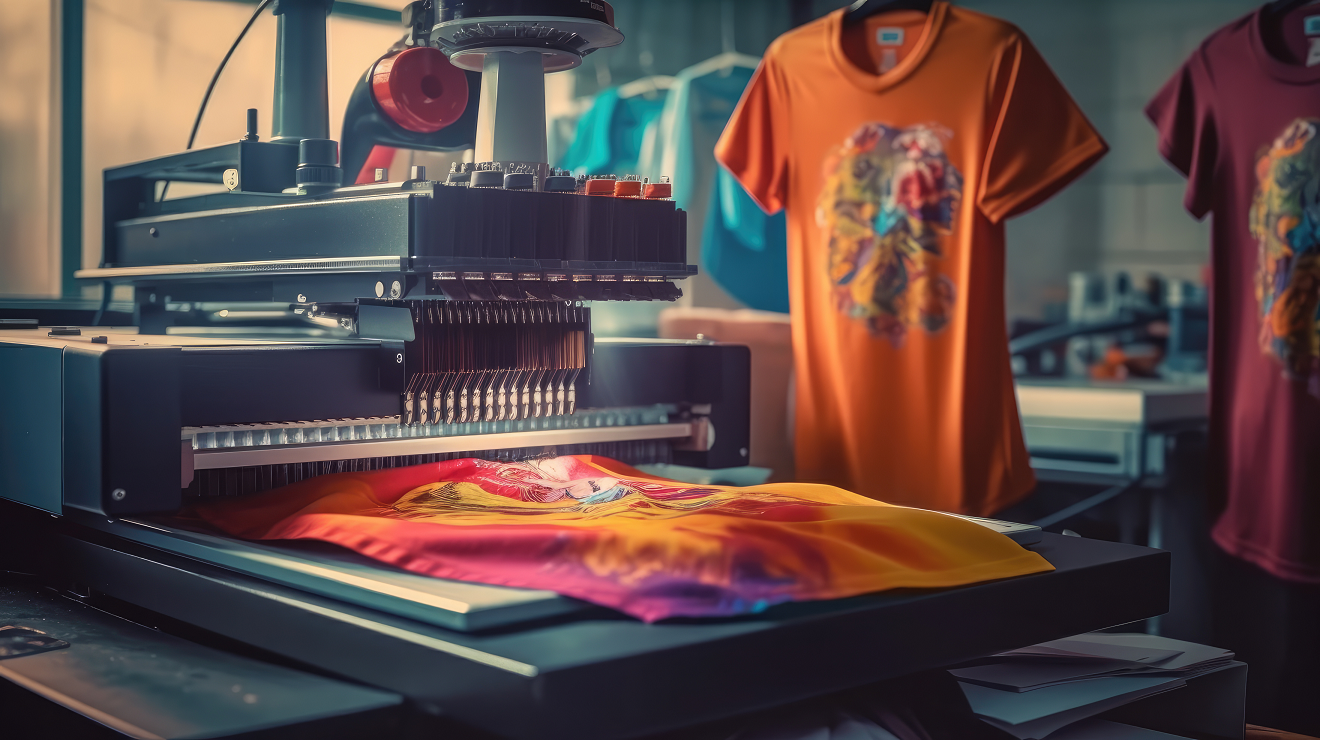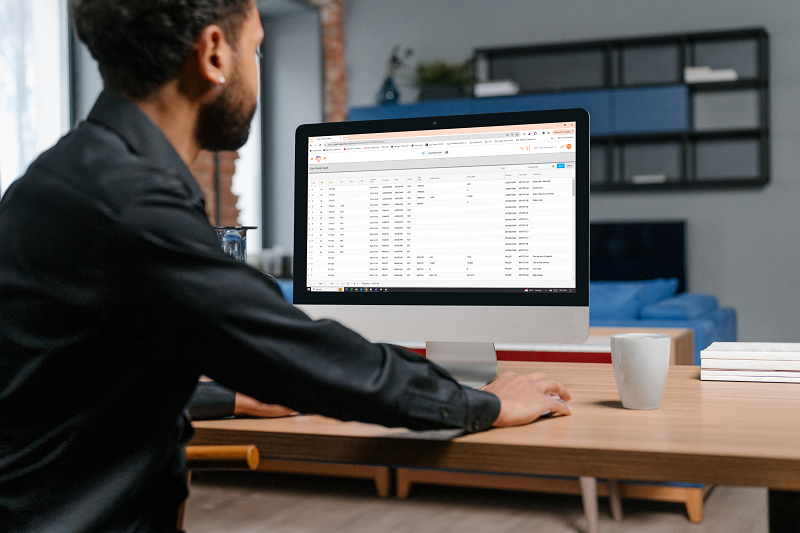Blog Layout
E-Commerce: Shifting Focus to Help Your Company Survive COVID-19
Published: April 28
Without a modern e-commerce platform, many small wholesale businesses are struggling to stay afloat as COVID-19 continues to spread and evolve. Many of the retail customers that wholesalers rely on for income have been forced into temporary or permanent closures, causing them to cancel their shipments. The retailers who manage to keep their business open are likely to reduce if not cancel their orders as their customers are decreasing the amount they purchase due to the national overall economic decline. Wholesalers are consequently left with an abundance of soon-to-be outdated inventory and a lack of work and funds for employees.
Welcoming a well-functioning e-commerce platform into your business model can help your company to survive this pandemic. An engaging online selling platform allows you to break down geographical barriers. You’ll have the ability to make up for lost business from existing customers by acquiring new customers in this expanded market. Additionally, you’ll gain an advantage over competitors who either do not have an e-commerce platform or who have an outdated one that is difficult to navigate.
What is E-commerce?
Put simply, e-commerce the transaction of money for goods or services facilitated over the internet. The term e-commerce can be used to describe a single purchase or a company’s online business as a whole.
If you’ve heard the phrases Electronic Commerce, E-Business or Internet Commerce used to describe this type of financial activity, that is because these phrases are interchangeable. It is important to note this, as the world of digital economics has a lot of terms that can be easy to forget or mix up.
Similarly to brick and mortar business models, there are four main business modules that can be used to categorize e-commerce.
1) B2C – Business to Consumer:
This is when a business makes their profits from selling goods or services directly to customers.
Example:
A business sells clothes to individuals who will then wear them.
2) B2B – Business to Business:
This is when a business strictly sells their goods or services to other businesses.
Example:
Business A, a manufacturer/wholesaler will produce/purchase goods to sell to Business B, a retail chain.
3) Consumer to Consumer:
This is when a consumer sells a good or service to another consumer.
Example:
Consumer A goes onto eBay and posts a shirt for sale. Consumer B sees the post and purchases that shirt to wear.
4) Consumer to Business:
This is when a consumer sells a product or service to a business.
Example:
There is a person who is very prominent online; their followers will buy clothing if they see him/her wearing it. He/she reaches out to a clothing company who is struggling to reach their target market, and offers to wear their clothing and shout them out online in exchange for money.
How to use E-commerce as a Competitive Tool
In today’s marketplace, e-commerce is commonplace. Nearly every company uses it; the trick is implementing it well. Below are some ways to outmaneuver your competition on this front.
Keep it simple online
The main purpose of your website is to facilitate sales; your site should be designed so that customers can do this quickly and logically. It is acceptable to lose a sale because your competitor was offering a better deal. It is negligent, however, to let sales slip away because potential customers are struggling to navigate your pages. Here are some things you can do to make sure your websites’ visitors have an easy time
• Have a logically categorized menu at the top of the page.
Remember that you are more familiar with the brand than a typical customer. Make sure to have multiple unbiased individuals try out your menu to assure that the layout makes sense.
• Include a search bar on your website.
While testing may have proved that your website is easy to navigate, some users are not willing to do the minimal amount of clicks it will take to reach their desired product. It is always safe to have a fail-proof option. Additionally, place the search bar at the top of your page. A person who doesn’t want to put in the effort of clicking a few buttons is also not going to want to hunt for the search bar.
• Design your page so that it is mobile responsive.
This is a great way to beat your competition. According to OuterBox, 40% of users will make a purchase from a competitor after a poor mobile experience. Make sure you’re the person that customer goes to, not the person whose page they leave. If you’re thinking that this loss of revenue isn’t exceedingly important, and mobile shopping isn’t happening too frequently, think again. During last year’s holiday shopping season, one third of online purchases were made on smartphones, not desktops. Holiday season aside, it is statistically much more likely that e-commerce customers will be visiting your site via smartphone or tablet than via a desktop. Make sure their experience is a good one.
Also, mobile friendliness is a category used by Google’s algorithm for website rankings. The better your ranking, the higher up you will be on the search engines’ pages when people are searching for the type of product that you sell. You can use this to your advantage so that when people search for the type of product you sell, they will see a link for your website before they see one for your competitors’.
• Maintain a simplistic design.
It may be fun to do crazy things on your website, include dozens of photos, and put exciting graphics as the mouse hovers. But, this isn’t an art project; this is the tool that your company has created to make sales. Those features could add time to the customers’ search for your product, and consequently drive them away. The most important page is the home page. The menu and search bar mentioned above should be directly at the top of the page. This is for customers who are pretty sure they want to make a purchase, so they can go directly to what they are looking for. The content that goes beneath these elements is important; make sure you craft this page meticulously. Do not put products for sale here. This is a huge mistake that many of your customers are going to make. Someone coming to your website knows what you sell already. This space is where you let customers WHY they should buy what you sell. Tell your story, emphasize charitable contributions that your company makes, list your mission statement. Also, make sure all of this is visually appealing.
Offer Excellent Customer Service
Your competitors may fall for the fallacy that excellent customer service is only important for brick and mortar establishments. If you want to have a larger customer base, you will remember that this is not the case. According to American Express, 90% of Americans use customer service as a factor in deciding whether or not to do business with a company. Here are some factors that would make consumers think that your customer service is great:
• Be easily accessible.
And realize that that doesn’t mean the same thing to everyone. Some consumers prefer to communicate over the phone while others prefer text, email, or live chats right on your website. Offer as many options that you are able to maintain in a timely fashion. If you are able to afford staff that make it possible to answer questions 24/7, do this. It is worth the expense. If that is not in your company’s budget, make it a rule of thumb to respond to all inquiries within 24 hours.
• Be transparent with your company’s policies.
This is true for delivery estimates, shipping policies, return policies, sizing of apparel products, additional fees and anything else that can leave a customer feeling disappointed if they anticipate a different outcome. If a customer knows what is coming before they make the purchase, they cannot be upset when the outcome they knew was coming occurs. Customers will, however, be upset if they are let down. Always be both transparent and honest.
• Add a personal touch to let customers know that they are valued.
With e-commerce, there is no face-to-face transaction. Remind customers that their money is received by other humans who truly appreciate it. The way you go about this may differ based on your company’s size. If you are a small or start-up company and have the time, add a note to every order. Let your customers know you are appreciative of their purchase. Include a smiley face or special words that will make them remember you the next time they go to purchase a similar product. This method isn’t necessarily possible for companies shipping out hundreds to thousands of packages per day. But, it is possible to put a practice in place that follows the same sentiment. You can have your website designed so that after customers hit the ‘buy’ button on your website, they are taken to a page that thanks them for their offer in the form of words or a discount for future orders.
• Collect feedback from customers regularly.
This practice allows you to know what you should continue doing as well as what you should stop. A big key here is to actually LISTEN. Do not have this feedback going to an inbox that is never checked. Make actions based on what you’re reading. If a particular consumer gives you a good tip, reach out to them and let them know that their voice was heard and a change was made. According to a study done by American Express, happy American customers will share their positive experience with approximately 11 other people. This word-of-mouth communication is free advertising! Also, that one person is significantly more likely to be a loyal customer to your brand now if they had a positive experience with your brand.
Update, update, update.
The internet is a rapidly growing environment. New features that will push customers to make a purchase on your site are being released weekly. For example, customers can now virtually try on your apparel, APIs have made it possible to suggest matching pieces to go with the one your consumer has selected, customers can leave their cart and still have it there if they leave your website and come back. If you do not have these features, your competitor will. If your website is lacking, consumers may reasonably assume that your products are as well. If they were unsure if your yellow turtleneck would look better than your competitors’ yellow turtleneck, and they have the option to virtually try it on while you don’t, you may have just lost that customer. Next time you consider turning down an update to your website because of the cost, consider the increase in revenue it could cause.
The idea of updating goes beyond website features. It is also beneficial to update the content on your page frequently. If you have a seasonal line available, emphasize it. You don’t want customers leaving your site when they wanted to make a purchase because they think you haven’t added any new products since the last time they visited your page.
Include Lots of High Quality Photos and Videos on Your Page
Fashion e-commerce companies who promote their apparel in a visually appealing manner outperform their competitors who do not, significantly. You are selling apparel; consumers need to feel confident that they are going to like the way your product looks when they get it in the mail. According to an article posted by CrowdRiff:
• Using video on a landing page increases conversions by 86%.
• 63% of consumers said good images are more important than product descriptions.
• 64% of women say images influence their purchasing decisions when shopping for apparel on a mobile device.
Showcase Positive Ratings and Reviews
According to a study featured on The Chat Shop, 91% of people trust online consumer reviews, and 68% of Americans say positive reviews make them more likely to use a business. It would be negligent to NOT include positive reviews on your website. It is especially vital to do this if your reputation is superior to that of your competitors’.
Utilize an Integrated System
Your employees need to track:
• Raw goods & production
• Demand forecasting
• Vendor performance
• Shipping & tracking
• Labor
• Cost accounting
• Payment processing and more
• Invoicing
• And much, much more.
New companies often do not realize how difficult it is to manage such a wide array of tasks using multiple platforms. Every department needs access to certain data, and the data they need often overlaps with the needs of another area. Often, each department ends up getting their own software to keep track of ‘their’ information. Companies will end up paying for: licenses for many different systems, training for employees to learn all of these systems and increased labor expenses for when individuals inevitably end up repeating data entry that was already entered in a different department.
This lacking business model can directly affect customers as well. If departments fail to communicate and/or enter data properly, there can be a miscommunication on the amount of a certain material in stock. This can lead to something showing as available on the website when it is not truly available. It may take 2 weeks for a customer to get a product they were promised to get in 3 days.
Another issue that arises from having employees spend time re-entering data frequently is lack of time. This task can be so time consuming that your employees will not be able to focus on projects that will actually help your company to grow, such as responding to customers, and creating business development strategies.
How ABS Can Help You to Make the Shift to E-commerce
Launching a meticulously planned e-commerce platform could cause a steep increase in sales and brand recognition. It is important you pair with a company who has a proven track record and understands your company’s vision when you begin this endeavor. At Apparel Business Systems, we can offer you a partnership with a team of knowledgeable individuals, and access to a wide array of helpful features, such as:
Electronic Data Interchange (EDI)
The cornerstone of e-commerce, EDI is the electronic exchange of business data from one business, partner or individual to another. This data exchange method is safer than other alternatives, such as paper. It also reduces the errors and transaction costs associated with the alternative option of having multiple softwares to complete this job.
ABS End-Consumer (B2C) Store Front Bridge
This interface allows you to use our ABS ERP software to exchange information with your existing consumers’ stores or websites. Quickly and accurately export or import data that your company needs to perform daily tasks.
Kiosk Portal
ABS’ Kiosk Portal provides you with a micro-site where your customers or their employees can directly log on to place orders. The Kiosk is ideal for service industry employees, who are given a budget to purchase uniforms or accessories
Customer & Sales Portals
The ABS B2B Customer & Sales Portal gives your customers and sales reps direct access to automatically updated information on their orders, invoices, available inventory and even work-in-process. Don’t want to share that much information? You can control what users can see and access. Empower your customers and sales reps with all of the information they need to be successful.
Robust Integration with Multiple E-commerce Platforms
We are pleased to provide the integration of our ERP application with several e-commerce platform vendors, such as: Big Commerce, Shopify, Magento and Woo Commerce. This integration allows us to offer you a diverse set of features such as: customized experiences for your online shoppers, ability for customers to use a search bar on your site, access to frequent website updates and much more.
Do these features sound like they could help your company to grow? Contact us today!

By Loleen Grenier
•
17 Feb, 2024
The versatility of modern workwear, supported by apparel software, means that it seamlessly integrates into various lifestyles for fashion brands. Software-driven design and production processes allow for the creation of workwear that is not only functional in a professional setting but also stylish and comfortable for everyday wear.

By Loleen Grenier
•
04 Feb, 2024
By harnessing detailed insights from sales, customer preferences, and inventory levels, businesses can optimize their operations, tailor marketing strategies, and predict future trends. This article delves into how leveraging data through apparel software can transform decision-making processes.
Thank you for contacting us.
We will get back to you as soon as possible.
We will get back to you as soon as possible.
4325 Alexander Drive, Suite 100
Alpharetta, GA 30022-3740
Apparel Business Systems | All Rights Reserved








